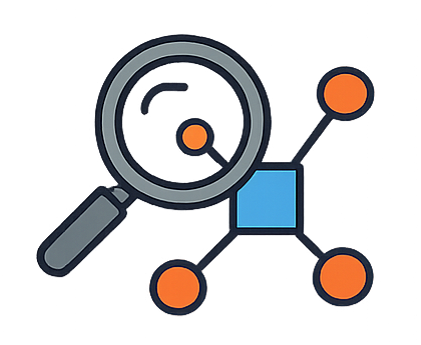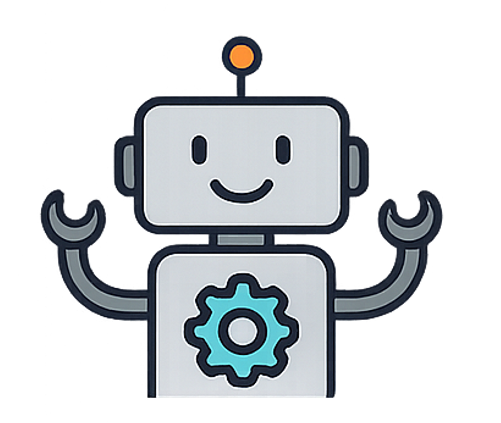Hubi.ai approach
Hubi’s approach to AI is :
- The conviction that adoption by teams is the key to successful deployment
- The provision of a generative and agentic AI and knowledge management platform
- The deployment of new, advanced use cases to boost usage and boost ROI

Our 4-step AI approach
▸
Understanding
Get a head start by understanding what really matters.
▸▸
Explore
Find out where AI can really make a difference in your businesses.
▸▸▸
Deploy
We turn potential into action, with concrete, useful solutions.
▸▸▸▸
Measure and optimize
Measure impact. Optimize usage. Move forward with confidence.
AI can't be improvised.
It's a step-by-step process.
Today, artificial intelligence is everywhere… but poorly understood, misused or poorly integrated.
That’s why we propose a progressive, concrete and responsible approach to help organizations derive real benefit from AI, without giving in to fads or multiplying experiments without a future.
Our services cover the entire AI transformation cycle :
At every stage, we combine technical expertise, business vision and human attention.
🎯 The challenge is not just to have AI the right AI, in the right place, for the right reasons.
Integrated with your tools, anchored in your internal knowledge, and truly adopted by your teams.
🧠 Raising awareness of AI: Understanding and appropriating artificial intelligence – For executives
- Deciphering what AI (really) is: Breaking through the media noise to acquire a clear, structured and strategic understanding of artificial intelligence and its limits.
- Grasping the organization-wide impacts: Identifying the transformations that AI induces on businesses, processes, culture, skills… and anticipating future changes.
- Master governance, security and compliance issues: Explore issues of data governance, confidentiality, cybersecurity and compliance (RGPD, auditability, traceability…).
- Clarify responsibilities and set a framework : Be aware of limits: bias, hallucinations, confidentiality, impact on business Know who does what, with what rules and safeguards. Understand the role of leadership in framing the adoption of AI in an ethical and sustainable way.
- Prepare a clear and aligned vision : Give decision-makers the benchmarks they need to launch a coherent, shared and realistic AI strategy, and avoid steering errors.


💡 AI Awareness: Understanding and embracing artificial intelligence – For employees & business teams
- Deconstructing preconceived ideas : Understanding what artificial intelligence is (and isn’t). Get away from fantasies and fears to distinguish reality from hype.
- Acquire the basics without jargon : Discover how AI works, what a model is, what a bias is, what training data is… in a clear and accessible way, without unnecessary technicalities.
- Discover concrete uses : Explore examples of AI applied to a variety of professions and sectors: automation, co-piloting, decision support, content generation…
- Consider human and organizational issues : Become aware of the limits: bias, hallucinations, confidentiality, impact on professions. Identify good practices and establish a responsible framework.
🔍 AI Exploration & Opportunities: Detecting and prioritizing high-impact use cases
- Explore the real potential of AI : Identify the areas, processes or businesses where AI can bring measurable value: time savings, reliability, automation, decision support…
- Involve teams in detecting uses : Organize collaborative workshops with business lines to bring out concrete, realistic use cases, directly linked to needs in the field.
- Evaluate feasibility and impact : Cross-reference business, technical, data and risk dimensions to prioritize the most relevant use cases. Separate real opportunities from fads.
- Build a clear, realistic roadmap : Be aware of the limits: bias, hallucinations, confidentiality, impact on business. Formalize a progressive AI trajectory, adapted to your organization, with measurable objectives and well-defined initial pilot project


🚀 Implementing & Implementing AI: Developing useful, ready-to-use AI agents
- Designing solutions aligned with business needs : Transforming prioritized use cases into concrete AI agents: co-pilots, assistants, automations or custom search engines.
- Integrate AI into the existing environment : Connect solutions to internal tools (CRM, SharePoint, Teams, Jira…), structure data flows, enrich with knowledge bases.
- Test in real-life conditions with users : Deploy an MVP or prototype in a controlled environment. Collect feedback, adjust prompts, refine interface and usage.
- Secure, track, document : Be aware of limits: bias, hallucinations, confidentiality, impact on business. Set up security rules, access control and exchange logging. Provide user support and clear adoption guidance.
📊 Measurement & & Optimization: Drive usage, adjust, amplify
- Track the right indicators : Track the right indicators: Set up KPIs tailored to your use cases: adoption rate, response quality, time savings, user satisfaction…
- Collect feedback from the field : Regularly gather feedback, blockages and suggestions from users to feed a continuous improvement approach.
- Optimize performance : Adjust prompts, enrich knowledge bases, improve UX… to make AI agents more useful, more reliable and more fluid over time.
- Prepare for scale-up : Transform successful MVPs into robust solutions, extended to other businesses or use cases. Structure the organization to support the growth of AI uses.

